Measurements
I found a booklet simply titled “Stammhengste” (Foundation stallions) and “Stammstuten” (Foundation mares). I guess with a bit of digging one could figure out which stud it belongs to. What I found interesting is the pedigrees listed with measurements, something I for one, rarely see these days. I picked out the asil pedigrees, especially because many appear in Southern African horses. Neferotete I WISH would have appeared in local pedigrees, because I have a soft spot for the Tahawi horses.
The measurements listed are for the “Widerrist: Stockmaß:” (Withers: Measurement:), “Brustumfang” (girth circumference) and “Röhrbeinumfang” (cannon bone circumference) in centimetres.
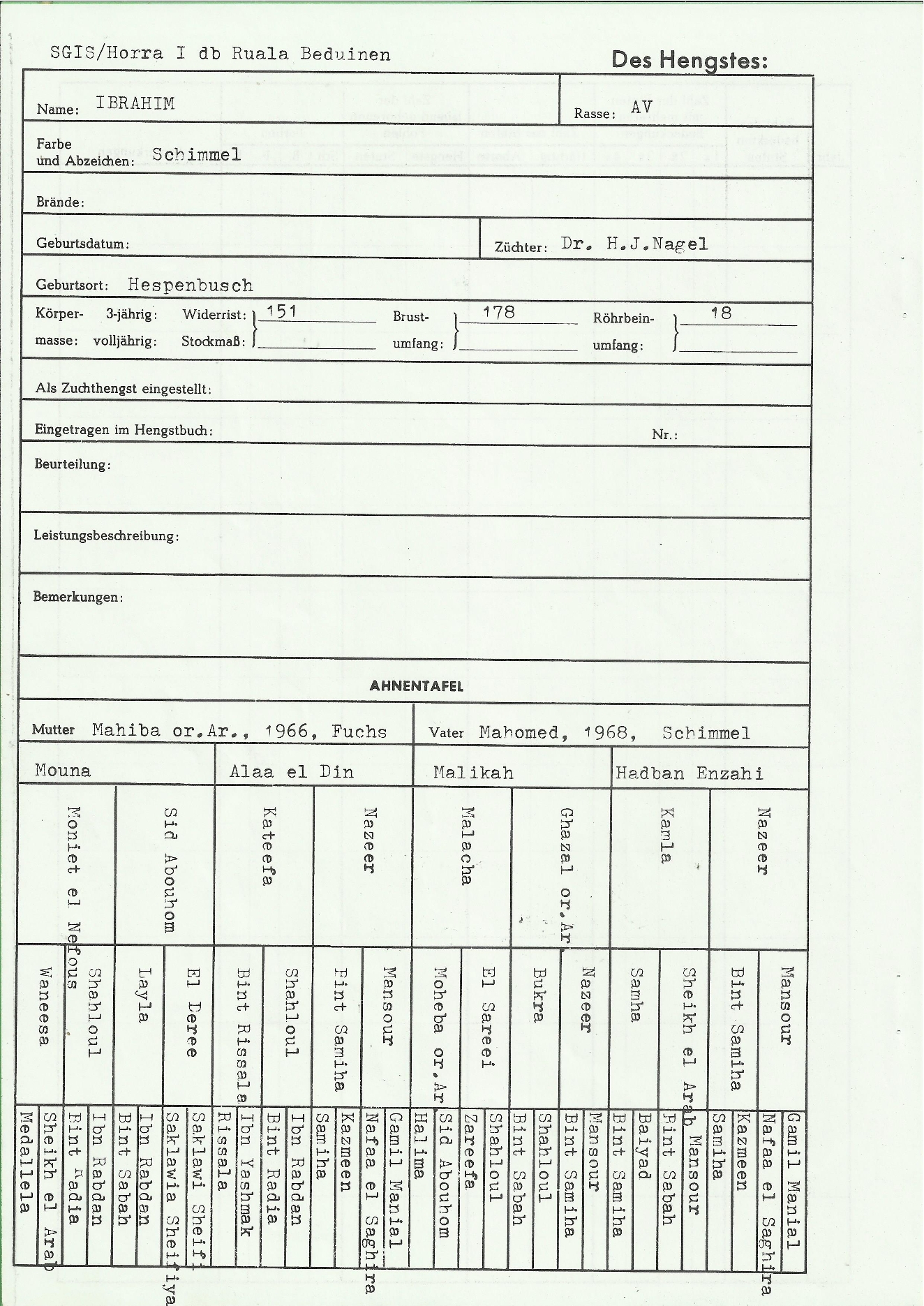
Ibrahim is sire to Mahib (imp) out of the Madkour daughter Mahabba. Mahib was imported to South Africa and then Namibia by Helga Aschenborn of Gülilah Stud and her daughter Gisela Uijs who managed the Uijs family’s interest in Nabilah Stud.
In his 1989 article “Zurück unter Allahs Sonne” (Back under Allah’s sun) in Arabische Pferde magazine, George Olms tells of Ibrahim export to Kuwait. Sadly Ibrahim did not survive the invasion the following year.
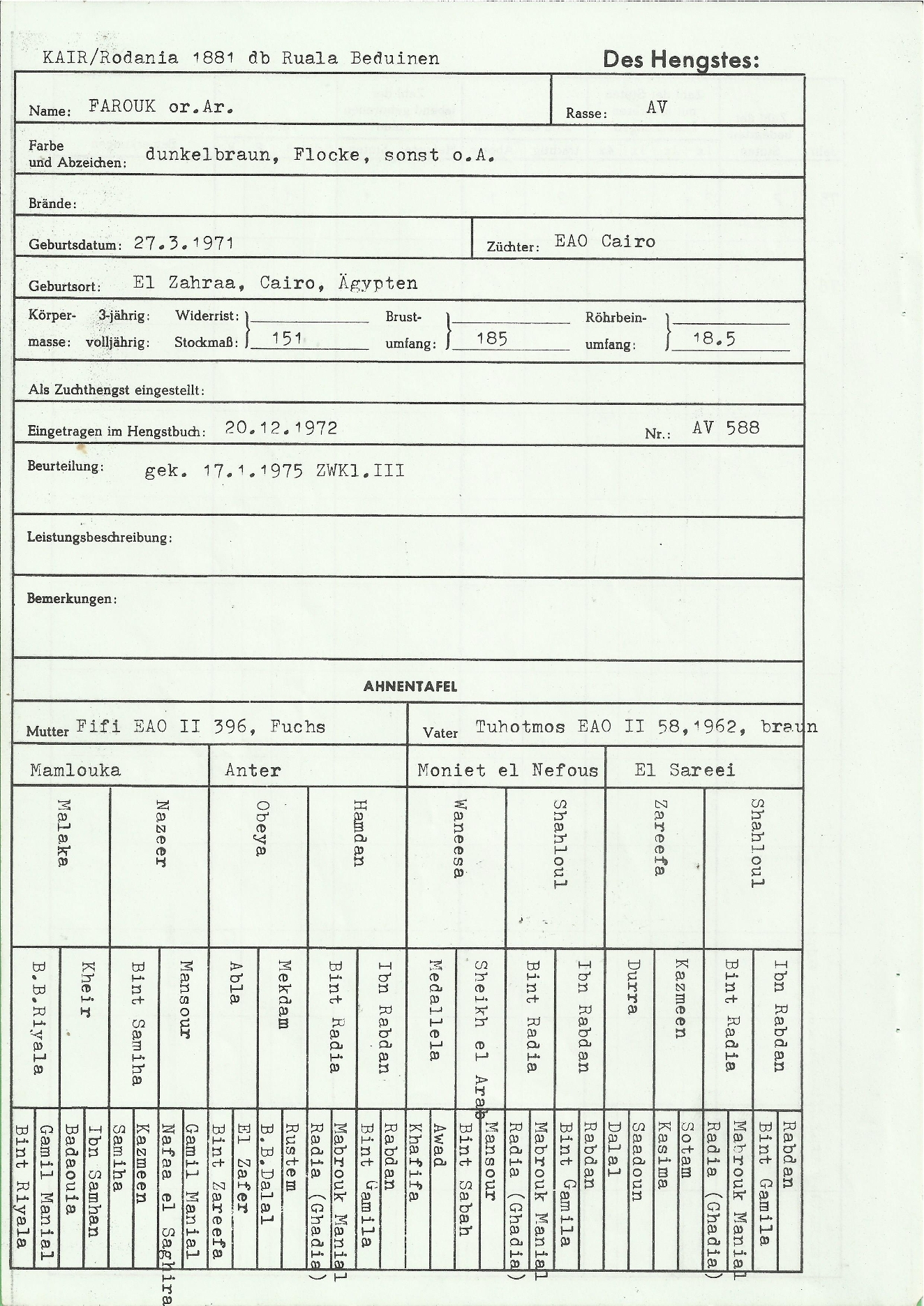
Farouk is sire to Shams el Farin (imp) out of Omar el Shaker (imp)’s paternal half-sister Inshraa.

Sarwat sired Sasab who is maternal granddam to the imported full sisters Sraab, Badeia and Saabana.
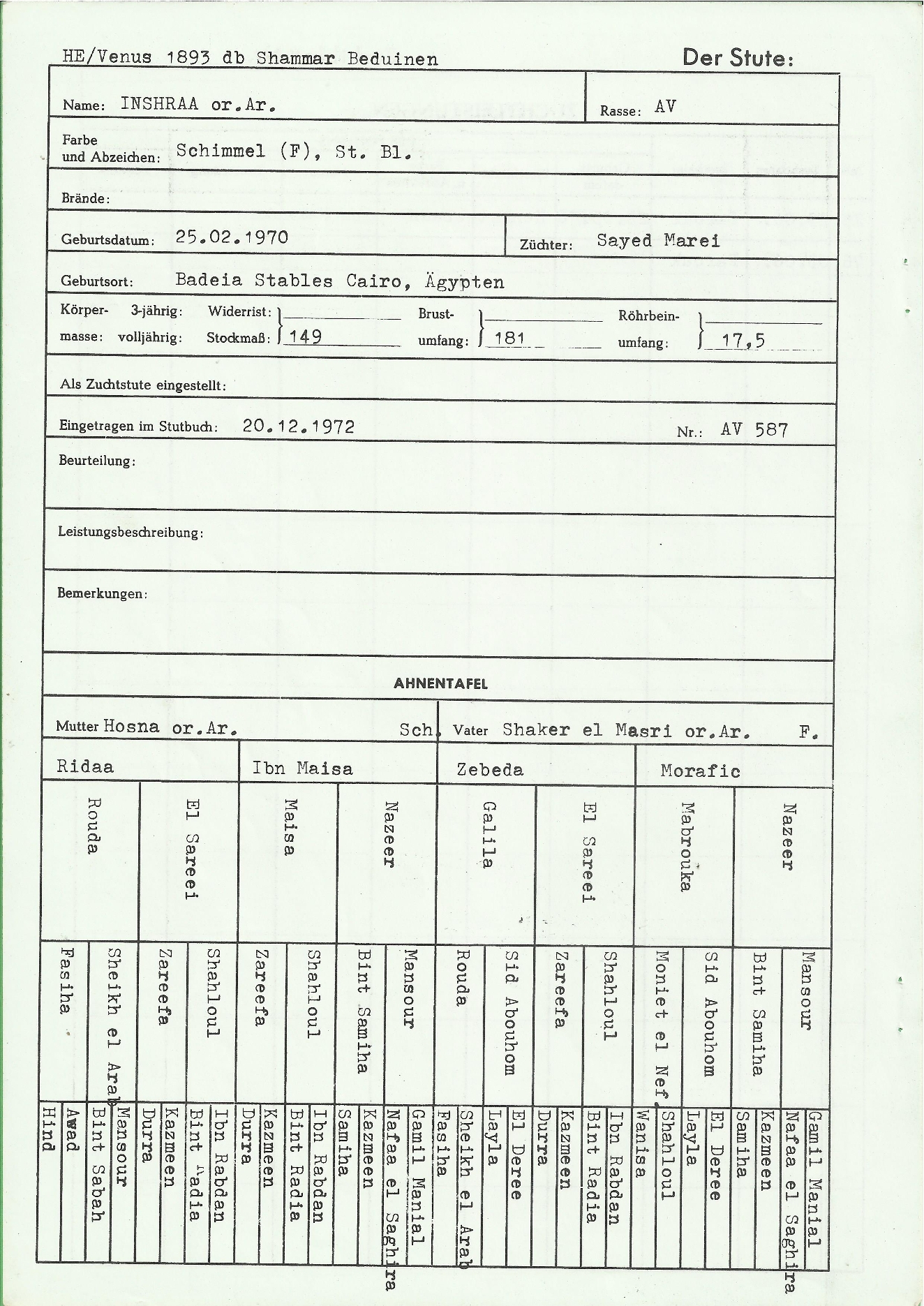
As previously mentioned, Inshraa is dam to Shams el Farin (imp).
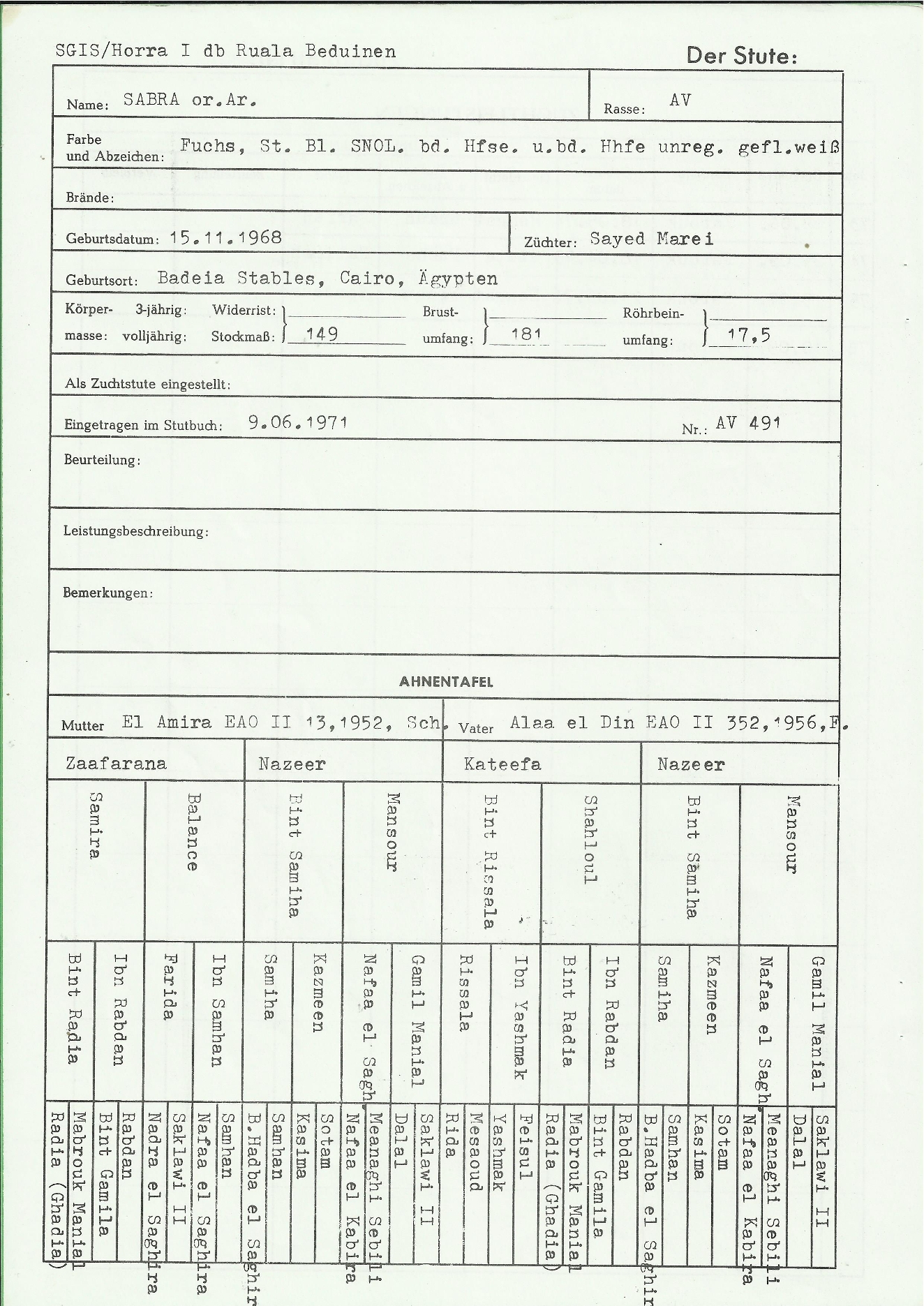
The three imported full sisters are the result of a mating between a daughter of Sasab (Sarwat x Sabra) namely Bint Sasab and a son of Sasab, Ibn Kheiralla.
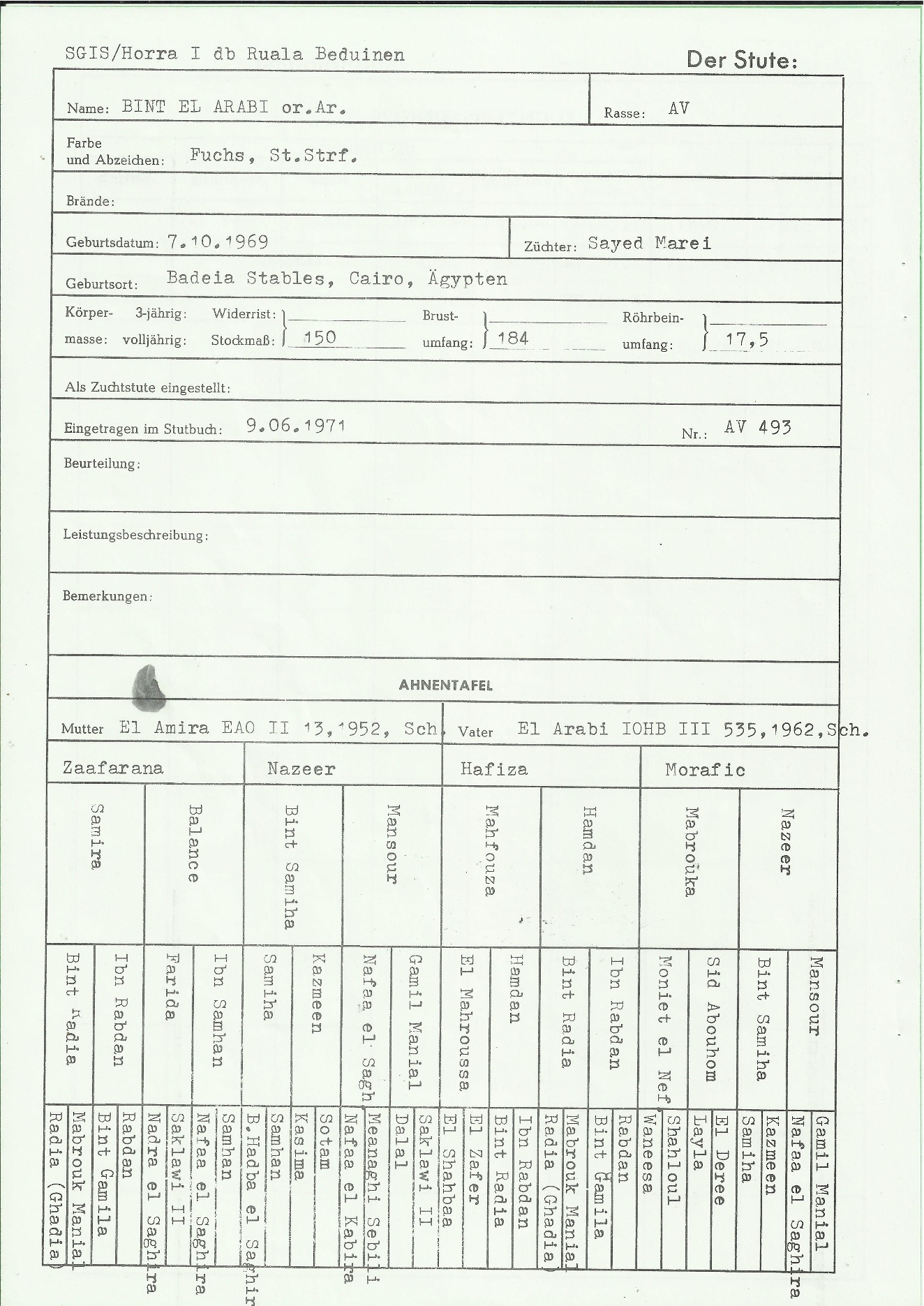
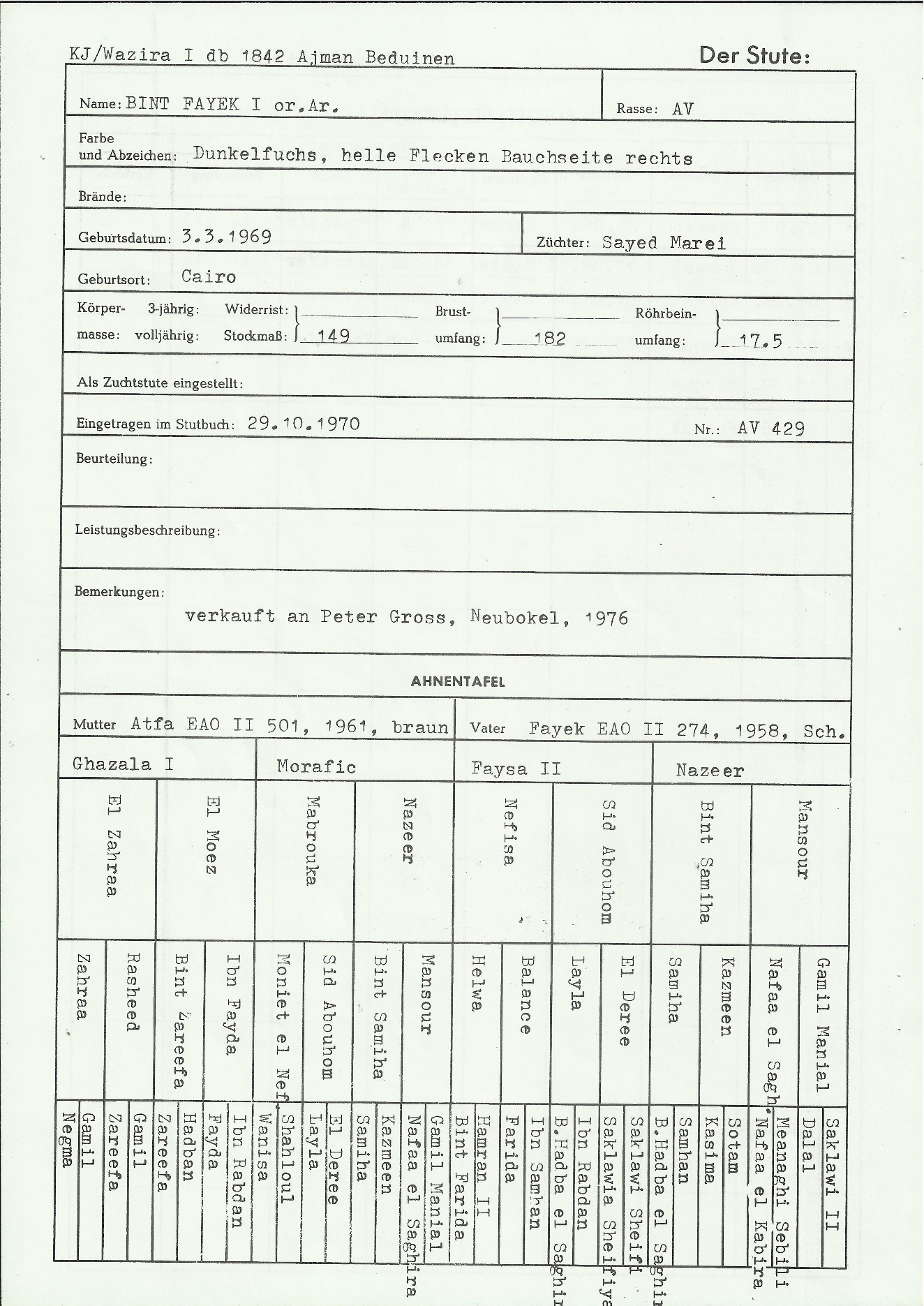
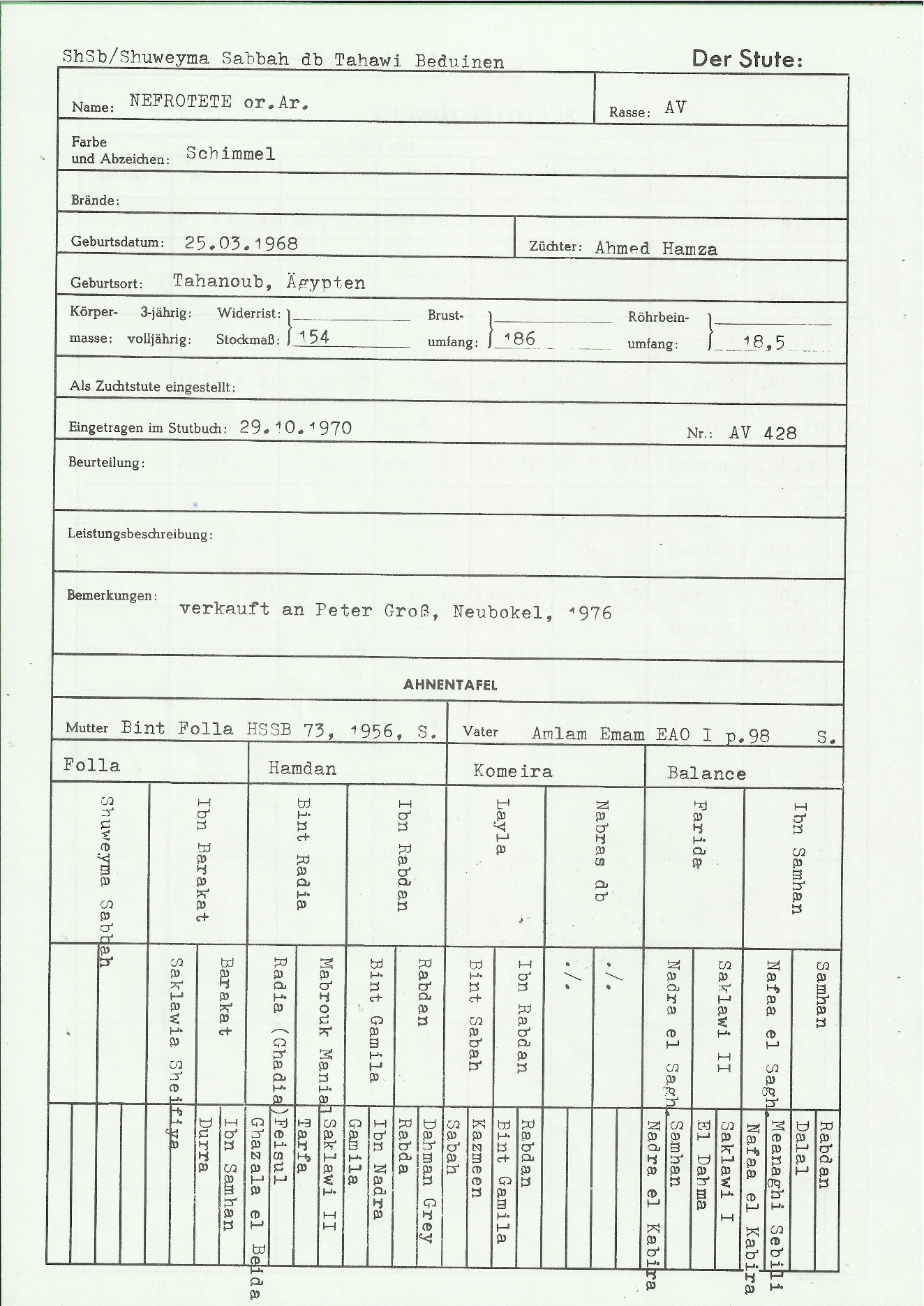
My personal favourite, Neferotete. According to the booklet she produced a son by Gharib named Ghanefer, two daughters by Sarwat named Sarnefer and Nefisa and finally a Farouk son named Nassib. In Volume I of the Austrian stud book I found a full sister Ghada (measurements 154-186-19), bred by Ahmed Hamza of Hamza-Stables in Egypt. She was imported by Gustl Eutermoser of Gestüt Schieferegg. Ghada is also listed as *Ghadaa on the AK Roster.

Nefrotete has Straight Egyptian tail female descendants still in Germany – there’s a 2008 granddaughter, Noraia Ghania Bint Ghorab, out of the Machmut daughter Noora, while a more distant tail female descendant Masr El Nahida (from the Shams El Nefisa branch) has produced a couple of daughters, including one born in 2024. There are others as well, mostly via Shams El Nefisa, but these two jumped out at me.
Re the measurements, I am struck by how small the cannon bone circumferences are relative to their heights. 18 cm is 7 inches, 19 cm is just about 7.5 inches. They were probably all doing just fine for the 8 inches of bone for every 1000 lb. Still, they all of them have smaller cannon circumferences than Mesaoud, whose measurements, according to Wilfrid Blunt, were:
Height at withers: 14.2 hh (147 cm)
Girth: 69 inches (175 cm)
Cannon circumference: 7.75 inches (19.5 cm)
That’s why I’m looking into Fatimah (Bint Foze’s half-sister) again. Because I don’t need sleep.
Hey Kate- there’s cannon bone measurement and there’s cannon bone measurements .. It depends where on the cannon the leg is measured.. If its at the skinniest part then its an honest reading and the potential owner is left with real world information. If its at a slightly different spot then its easy for the scamming seller to make a claim of larger bone size than is actually true. To get a real world result that is a valid predicter of long term soundness ya need to consider how the leg will respond to the stresses of athletic performance, which means running and jumping under saddle. The American Shagya people went through this whole thing some years back, with the then chair of their group insisting that cannon measurements be taken at the smallest diameter of the cannon with the tape ,’ pulled quite snug.’ The result is that american shagyas are known for durable, tough, feet and legs.
best
Bruce Peek
I think this booklet is about the horses of the studfarm “El Shams” in Delingsdorf/North Germany, founded by Freiherr (Baron) von Niebelschütz, who imported many (if not all) of those horses with Egyptian origin. After his passing, his daughter Doris took over the stud. Later she married Dr. Otto Saenger who was a high official of the German Arabian Horse Association (VZAP), an expert and an author. In 1987 I visited the studfarm a few times. They still had the Tuhotmos-son Farouk and the Mahomed-son Ibrahim, both were very beautiful and impressive to me, as well as numerous Mares and young stock, all of high quality. Very interesting to read about them here, brings back fond memories – thank you for sharing! Unfortunately, I don’t know if the studfarm still exists and if so, what their activities are these days.
I cannot alter my first comment, so here is a orrection:
El Shams stud was founded by Wilhelm C. Hansen, afaik he was the importer of the horses from Egypt and the father of Doris (whose 1st marriage was to Freiherr von Niebelschütz and when he passed on, 2nd marriage to Dr. Saenger). I’m sorry for the confusion.
Recalling the advertisements from the old “Arabische Pferde”, my money was on El Shams too.